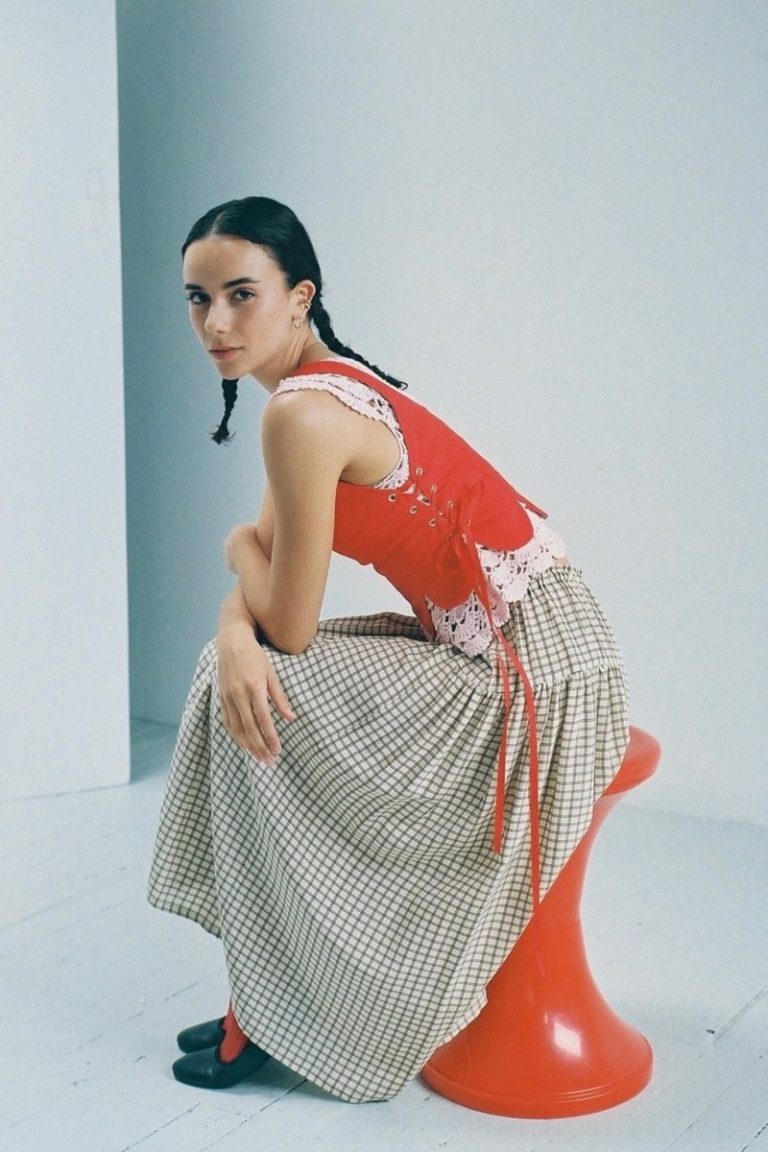When Michelle Larsen launched her fashion brand, she planned to make every piece herself, with transparency, sustainability, and fair labor practices in mind.
She has held fast to these principles as the brand has evolved over the years, but recently she has upended her original vision and now many people have made one of her designs.
Larsen’s brand, Fortive, is one of a handful of small fashion brands that has started selling PDF sewing patterns — blueprints for cutting and marking fabrics, along with instructions for sewing those fabrics into garments — in addition to, or instead of, ready-to-wear clothes.
“A few years ago I felt a connection that making sewing patterns really aligned with my values because it gave other people the ability to make things,” she said from Vancouver. “There’s a layer of accessibility there that I really value.”
Larsen and her colleagues see the sewn-pattern model as an extension of their “slow fashion” mission to reduce the industry’s negative impact on people and the planet, in contrast to fast-fashion companies like Zara and Shine.
But slow fashion can often be expensive: in addition to releasing fewer designs per season and producing fewer garments per design, a central pillar of the model is paying fair wages to everyone involved in the process.
“Let’s be honest, a lot of people, myself included, can’t afford big-ticket items,” Larsen said. “It’s really nice to be able to say to someone, ‘Hey, if you can’t afford this $240 tulip top that I made, you can sew it yourself.'”
So far Larsen has only released one pattern: a corset-like sleeveless shirt with lace-up sides and a wide, scalloped hem.
The second pattern, a skirt with gathered side panels and an elasticated waist, is currently in testing and will be available to customers soon.
The Tulip Top PDF costs $22 before tax, and only requires about a meter of fabric, which Larsen noted could easily be found at a thrift store for a few dollars.
The pattern pieces are long and narrow, so if you’re already a seamstress, they’ll easily fit over scraps, which is one of the reasons she designed the shirt that way.
“I am always conscious of how I use my own resources in my work,” she said.
But beyond reducing waste, the move also has business benefits.
Although the number of people who can sew is smaller than the number of people who need to be clothed (which is nearly everyone), Larsen doesn’t expect the move to shrink her customer base, as she will continue to sell custom-made clothes.
“It’s kind of come full circle,” says Leah Barrett, a fashion professor at George Brown College in Toronto. “I’m old enough to remember when clothes were made at home.”
Barrett, who specializes in sustainability in apparel manufacturing, said much of the fashion industry’s environmental impact comes from overproduction.
Home seamstresses (many prefer the homonym “sewer”) may make mistakes and create unintended waste, or produce more clothes than they need, but the scale of that waste is negligible compared to that of fast fashion brands, who must guess how much to produce to satisfy their customers.
“Demand forecasts are often wrong and designers end up with serious inventory issues,” Barrett said. “There’s no way around it.”
Except, perhaps, for sales patterns.
Predictions are necessary — will a customer like the garment enough to buy the pattern and take the time to sew it — but there’s little loss if the designer guesses wrong.
Barrett pointed to another Canadian clothing company moving into the sewing market, Weyburn, Saskatchewan-based Cedar & Vine, which sells 100 percent linen fabric that seamstresses can use to make patterns it recently released.
“If the fabric isn’t right, the style can fall flat,” she said, adding that providing fabrics, or at least offering fabric suggestions, can “minimize mistakes” and, as a result, minimize waste.
For designer Brooke Cannon, who had long been conflicted, turning to patternmaking seemed like a good solution: She wanted to create, but the world was already full of things.
“It’s like a negotiation with yourself,” she says. “I told myself, ‘It’s just a small amount of money, and I’d rather they invest in my brand and my artwork rather than a fast fashion brand,’ but at the end of the day, I’m just participating.”
She and her business partner, Katie Beaton, decided to close their respective online shops (Cannon’s accessories line Never Ending Weekend and Beaton’s cult-favorite slow-fashion line Beaton Linen) and start something new together.
The result was BC-based Beaton Weekend, which will soon be releasing patterns of some of Beaton’s most beloved designs.
Cannon has spent the past few months sketching designs and writing and illustrating sewing instructions.
“I basically spend all my time working a very nerdy, non-dopamine-inducing job,” she said.
In the end, she hopes it will all be worth it.
“The great thing about making patterns is that once you make them and put them out there, it becomes a passive income, and that’s it. You make something and it becomes digital,” she says. “It just kind of works itself out.”
This report by The Canadian Press was first published July 21, 2024.
Nicole Thompson, The Canadian Press


